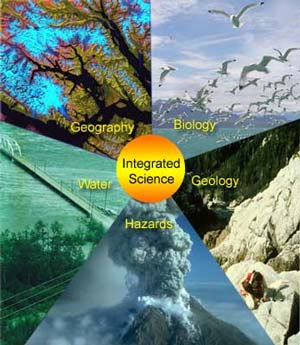

| The USGS Florida Integrated Science Center (FISC) is established for the advancement of USGS science in Florida, the Southeastern States, the U.S. Caribbean, and the Nation. There are three Centers, four offices and five field stations within Florida and the U.S. Virgin Islands, housing various science teams linked directly to science issues and programs. The FISC is a field-based organization initiative to promote and enhance integrated science through scientists at the staff-level. It brings together Florida-based scientists and support staff under centralized leadership to join in working on priority issues while streamlining decision making and promoting operational efficiencies. The FISC audience consists of scientific peers, agency partners and clients, the public, and elected representatives. Organizations partnering with the USGS through the FISC include the Fish and Wildlife Service, the National Park Service, the National Oceanic and Atmospheric Administration, the Environmental Protection Agency, State and local governments, Indian Tribes, and academia. |

|

|
Responsible stewardship of western lands is a primary goal of many Federal and State agencies as well as non-government organizations and citizen groups. In parts of the West, much of that land is underlain by marine black shale, such as the Cretaceous age Mancos Shale of western Colorado, northern New Mexico, and eastern Utah. During the last few decades, land use and water-quality issues related to Mancos landscapes have risen in prominence in the western slope area of Colorado and parts of eastern Utah. Many immediate issues are related to specific, naturally occurring toxins such as selenium and salinity. As a result of the 2002 workshop co-sponsored by Bureau of Land Management, Bureau of Reclamation, and the USGS, a multi-disciplinary project was started in fiscal year 2003. The broad objectives of this project are to use science to help define issues of the black shale terrains, provide scientifically valid information for use in developing resource and land-use management policies, and assure the information provided is transportable and applicable to resource managers in other black-shale landscapes. One immediate outcome is improved lines of communication among the Federal, State, local, and industry managers. Long-term, the project will contribute to the development of predictive models that can be used to evaluate black shale landscapes in terms of their economic resources and their environmental sensitivity. More information can be found on the Web at http://minerals.cr.usgs.gov/projects/mancos_shale/. |
|
The Greater Everglades ecosystem is a unique subtropical network of diverse habitats that encompasses a large part of the southern Florida peninsula. Part of the area -- mostly publicly controlled parks, preserves, sanctuaries, and refuges managed as DOI trust resources -- remains in nearly undeveloped condition, while much of the area has been dramatically changed due to increases in urbanization and agriculture. Major changes to the natural hydrology of the system, which supports diverse ecosystems, have had profound effects on the natural habitat.
Recognition that the natural ecosystem of South Florida has been seriously altered and that continued impacts will further degrade this ecosystem has led a coalition of partners to identify and implement studies to address key restoration needs outlined in the Comprehensive Everglades Restoration Plan (CERP) related to water quantity, quality, and timing of delivery of water to the Greater Everglades ecosystem. Restoration partners include the USGS, Fish and Wildlife Service, the National Park Service, the National Oceanic and Atmospheric Administration, the Environmental Protection Agency, State and local governments, Indian Tribes and academia. |

|

|
Both the DOI and USDA have expressed the need to understand the carbon cycle and in particular carbon storage to reduce the impact of greenhouse gases, such as carbon dioxide, methane, and nitrous oxide, on global warming. Other concerned parties include Congressional representatives, State agricultural officials, conservation groups, private industry, and farm groups. USGS studies indicate that greater amounts of atmospheric carbon can be stored in restored wetlands and bottomland hardwoods than in agricultural lands managed to increase storage, even though the restored area is much smaller. Wetlands in the prairie pothole region of Iowa, Minnesota, South Dakota, North Dakota, and Montana traditionally functioned as sinks for atmospheric carbon, but row crop agriculture (the current principal land use) releases carbon to the atmosphere instead of storing it. Based on USGS research, USDA added restored prairie wetlands to the National Carbon Sinks Table. To aid managers, a USGS project was started in FY2003 to (1) develop a State-by-State inventory of existing and potential wetland carbon stocks in the prairie pothole region of the United States, (2) evaluate differences in carbon storage among various wetland types, and (3) examine the interrelationship of carbon production and climate change. Similar research is underway in the Lower Mississippi Valley (LMV) and other locations to quantify potential carbon storage in soil and trees through reforestation of LMV croplands. More information can be found on the Web at http://www.npwrc.usgs.gov/resource/othrdata/amnorpln/conclu.htm. |